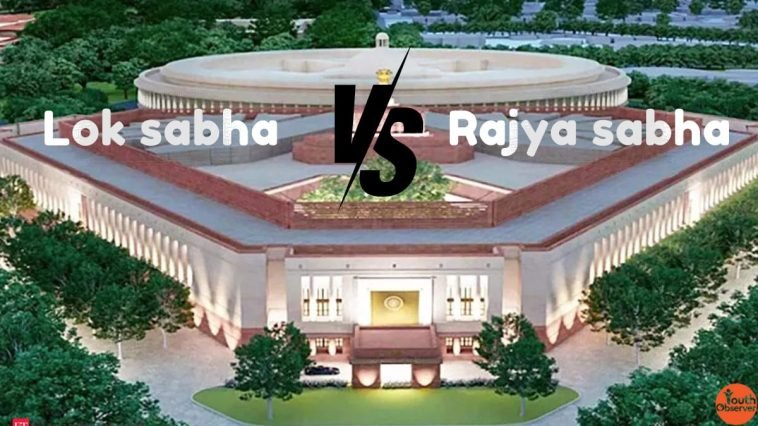Want to understand the workings of India’s parliamentary system? Curious about the roles of Lok Sabha and Rajya Sabha in shaping the nation’s laws and policies? Look no further! In this article, we’ll delve into what Lok Sabha and Rajya Sabha are, how they function, and their significance in India’s democratic framework. Whether you’re a student, a citizen eager to learn, or simply interested in understanding the country’s political structure, read about Lok Sabha and Rajya Sabha and understand what are these and what makes them different.
What Is Lok Sabha and Rajya Sabha?
In India, the Lok Sabha and Rajya Sabha are like big decision-making groups where important discussions and laws are made. Let’s break it down:
Lok Sabha
The Lok Sabha is a group of elected representatives who speak for the people of India. Imagine it like a big classroom where each representative represents a different area or constituency. These representatives are chosen by the people through elections. The Lok Sabha is responsible for making laws, discussing important national issues, and deciding on policies that affect the country.
Rajya Sabha
The Rajya Sabha is another group of representatives, but they are not directly elected by the people. Instead, they are chosen by the members of various state legislatures and by the President of India. Think of it like a group of wise advisors who bring different perspectives to the table. The Rajya Sabha’s main job is to review and suggest changes to laws made by the Lok Sabha. They also discuss issues related to the states and the country’s overall welfare.
Difference between Lok Sabha and Rajya Sabha
Lok Sabha and Rajya Sabha are two important parts of India’s government, but they have some key differences:
1. Elected vs. Appointed:
- Lok Sabha members are directly elected by the people of India during elections.
- Rajya Sabha members are not directly elected by the people. Instead, they are chosen by members of state legislatures and by the President of India.
2. Representation:
- Lok Sabha represents the people of India. Each member represents a specific area or constituency.
- Rajya Sabha represents the state of India. Members are chosen to represent the interests of their respective states.
3. Term Length:
- Lok Sabha members serve for a term of five years unless the government is dissolved earlier.
- Rajya Sabha members serve for a term of six years, with one-third of the members retiring every two years. This ensures continuity in the functioning of the Rajya Sabha.
4. Legislative Powers:
- Lok Sabha has more legislative powers compared to Rajya Sabha. It is the primary house where most laws are introduced, debated, and passed.
- Rajya Sabha can suggest changes to laws passed by Lok Sabha and discuss issues related to the states. However, it cannot introduce certain types of bills, such as money bills, which are exclusively under the domain of Lok Sabha.
5. Composition:
- Lok Sabha has a maximum strength of 552 members, including up to 530 members representing states, up to 20 members representing Union territories, and two members nominated by the President to represent the Anglo-Indian community if it is not adequately represented.
- Rajya Sabha has a maximum strength of 250 members. Twelve members are nominated by the President to represent expertise in specific fields like literature, science, art, and social service.
In summary, the Lok Sabha represents the voice of the people through elected members, while the Rajya Sabha provides a platform for experienced leaders and experts to contribute to the decision-making process. Together, they form the backbone of India’s parliamentary system, ensuring that the interests of both the people and the states are represented and considered in the nation’s governance.

